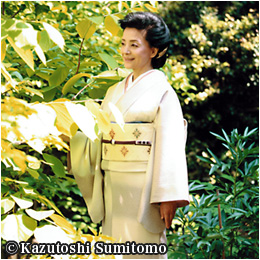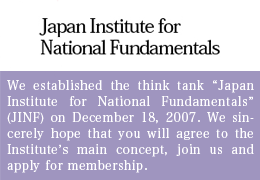ASAHI’S CORPORATE CULTURE RUNS COUNTER TO TRUE SPIRIT OF RESPONSIBLE JOURNALISM
A group of journalists currently or formerly employed by the Asahi has written a book entitled The Asahi Shimbun: Collapse of A Japanese Organization (Bungei Shunju Ltd., Tokyo; 2015), attempting to defend the liberal mass-circulation daily against charges that it has fabricated certain news stories. Discussing the criticism leveled at the Asahi by rival newspapers and magazines in the course of these scandals, the authors declare:
“Viewing the Asahi Shimbun from within, one realizes the right-wing camp’s stereotyped criticism that its editorial stance is ‘anti-Japan’ and ‘left-wing’ is widely off the mark, and that the tone of argument by conservative commentators attributing the scandals to its left-wing ideology proves they have failed to see the truth.”
I seriously wonder if such a view is valid. Have we journalists who have been critical of the daily, including myself, really “failed to see the truth”? The Asahi journalists also maintain:
“Looking at the paper’s reporters and editors individually, the Asahi staff who recognize the necessity of a revision of the Japanese constitution and tax increases already outnumber those who don’t.”
Reading this paragraph, I scribbled in the margin of the book in spite of myself: “If so, why doesn’t the Asahi simply go ahead and change everything, including its editorials and its popular Vox Populi, Vox Dei section?”
If a majority of the Asahi editorial staff do indeed recognize the need for a constitutional revision, how do they account for what the daily still continues to promote today—skepticism about the proposed revision? What is the point of its tenaciously advocating left-wing ideas despite its claims, then accusing those who become convinced that “the Asahi is left-wing” as conservatives lacking proper understanding of the true nature of the daily? Before turning to criticize others, the Asahi had better take the initiative in changing its own editorial stance.
The book is indeed provocative in its own way. The writers know the Asahi as a business entity inside and out, most of them having worked there for a long period time. Unquestionably, the book represents an attempt to plausibly explain how the daily distorted its coverage of the “Yoshida record”—the remarks before a government panel by Masao Yoshida, former plant manager at TEPCO’s Fukushima #1 Nuclear Power Plant—as well as the alleged coercive transportation of Korean “comfort women” by Japan’s army during World War II. (For more than 30 years, the Asahi carried a series of reports based solely on the fabricated testimony of a self-styled “comfort women” recruiter named Seiji Yoshida.)
Written by veteran journalists, each entry in the five-chapter, 254-page book is engaging, presenting an intriguing portrayal of the people working at the Asahi through a rich assortment of anecdotes. However, the writers’ criticism of their own employer is also a turnoff for the reader, who inevitably cannot but wonder: “You may be critical of the Asahi, but don’t you—or didn’t you once—belong to the very organization you are running down?” Even so, the book serves as a useful reference for understanding what the Asahi is all about.
Valuing Promotions over Corrections
In an attempt to address a string of scandals described by some as the worst example of distorted reporting in Japan in the past century, the Asahi first set up two subcommittees: one an independent committee assigned to probe its coverage of the “comfort women” and the other a “News and Human rights committee” charged with examining how the daily covered the “Yoshida report” concerning TEPCO’s Fukushima #1 plant. Reports from these two sub-committees were then submitted to a broader committee assigned the task of “recovering public trust and rejuvenating the Asahi.” The contributors point out that even such probes were utilized as platforms for power struggles inside the Asahi.
Even when cases of erroneous reporting are brought to light, the Asahi has remained reluctant to disclose them or run a correction. To do so apparently adversely affects the future careers, i.e. promotions and pay increases, of the writers and editors involved as well as those of their bosses. Therefore, they work closely together, doing their best to avoid running a correction. The daily’s coverage of the “comfort women” issue is a case in point, the book points out.
In its March 31, 1997 edition, the Asahi reported that the “Yoshida testimony” on the Korean “comfort women” could not be “verified.” The daily could have been spared the embarrassing loss of credibility today had it run a correction then and apologized for its errors. However, it made a decision to forgo such an admission. The writer of this section notes: “At the time, there was a tacit understanding among those involved that it was all settled because we managed to avoid running a correction.” Obviously, the Asahi’s editorial staff valued promotions over factual reporting or correcting fabricated stories.
In a section entitled Mission of Our Reporters: To Be On the Attack at All Times, the book reveals some shocking internal circumstances as regards the daily’s coverage of “comfort women.” It admits that the initial purpose of the Asahi’s investigative reports last August 5-6 on its past “comfort women” coverage was not to verify the credibility of the “Yoshida testimony” but to “thoroughly probe the Japanese army’s ‘forced’ transportation of ‘comfort women’ in order to demonstrate that ‘after all, none of our previous reports was false.’”
During a debate among party leaders sponsored by the Japan Press Club just before the lower house election in December 2012, Shinzo Abe, then heading the Liberal-Democratic Party (LDP) which was out of power, criticized the Asahi by name, pointing out that “a book written (in 1977) by a con man named Seiji Yoshida and enhanced by reports distorted by the Asahi” has spread across Japan “as if it were the truth.” With Abe coming back as prime minister after his party returned to power in 2012, an investigation was launched into the controversial “Kono statement” (the Japanese government’s 1993 statement on the issue).
Viewing criticism as a net encircling it, the Asahi realized that the “authenticity” of its reports relating to the “Yoshida testimony” needed to be verified. Seeing that such criticism could no longer be ignored, the daily assigned a news team to specifically reexamine the “comfort women” issue, so explains the book.
What an appalling lack of self-examination. No wonder the daily offered no apology concerning its disgraceful “comfort women” coverage. It is important we remember that the Asahi’s review of its coverage of this issue was in fact prompted by a determination to confront the Abe administration with proof of the truthfulness of its reporting.
Tetsuro Tatsuno, a non-fiction writer who wrote Chapter III entitled The “Comfort Women” Issue: A Cancelled Apology, is the only journalist who reveals his identity because “I just didn’t feel comfortable being anonymous as I cut down my former colleagues.”
Confession 23 Years Too Late
Tatsuno wrote a front-page article in his paper’s January 11, 1992 morning edition entitled Military Comfort Stations: Documents Show Army’s Involvement. The Cabinet Councilor’s Office on External Affairs looked like an overturned anthill when his report appeared. A distraught Prime Minister Kiichi Miyazawa, who had planned on a visit to Seoul five days later, ended up apologizing eight times to South Korean President Roh Tae-woo during the brief visit.
Tatsuno has this to say about the article he wrote that drove the Japanese government into a corner: “The truth of the matter is that clearly there were errors in what I wrote in 1992.”
In a commentary following the article, some of the statements made by Tatsuno in his original article are quoted, such as: “Korean women accounted for some 80 ercent of ‘comfort women’; “They were forcibly transported (to Japanese military brothels) as members of the Women’s Volunteer Labor Corps”; and “Their number was said to be between 80,000 and 200,000.” An examination of the historical record shows that these statements are all totally groundless.
“I wish to express my sincere apology for what I wrote regarding these points,” writes Tatsuno. In point of fact, the Japanese military got involved in matters relating to establishment of military brothels specifically to exercise control over unscrupulous private companies and implement rigid rules for hygiene and sanitation. Without making any mention of this point, Tatsuno worked with the Asahi to produce unsubstantiated reports about “forced transportation,” the relationship between “comfort women” and the Women’s Volunteer Labor Corps, and the total number of Korean “comfort women.” Tatsuno writes as though he hardly realizes the negative impact and sheer disgrace his coverage of the “comfort women” has brought on Japan. His confession comes 23 years too late.
As regards the daily’s reporting on TEPCO’s Fukushima #1 Plant and the “Yoshida record,” the book reveals stunning anecdotes reflecting the corporate culture that engenders the peculiar mentality of the people who work at the Asahi. Although the daily reported that 90 percent of Yoshida’s staffers abandoned their posts against his order (soon after the tsunami hit), it would have been crystal clear that this report was false if anyone had bothered to obtain a copy of the “Yoshida record” (Yoshida’s testimony before government investigators). Why, then, did the Asahi carry such a report? An anonymous journalist assigned to tackle this subject writes: “This was a mystery that rival dailies and magazines failed to resolve no matter how much they wracked their brains.” This was certainly the case. The author has this to add:
“The answer to this mystery is quite simple. They had no intention whatsoever of quoting from the ‘Yoshida record’ in order to match the story they already had in mind. In a nutshell, they weren’t even aware that they had ‘deliberately concocted the article.’”
This is what the Asahi is all about. Through this book, I sincerely hope the reader will come to know the true corporate culture of this daily and the nature of its editorial staff.
(End)
(Translated from “Renaissance Japan” column no. 641 in the February 5, 2015 issue of The Weekly Shincho)








